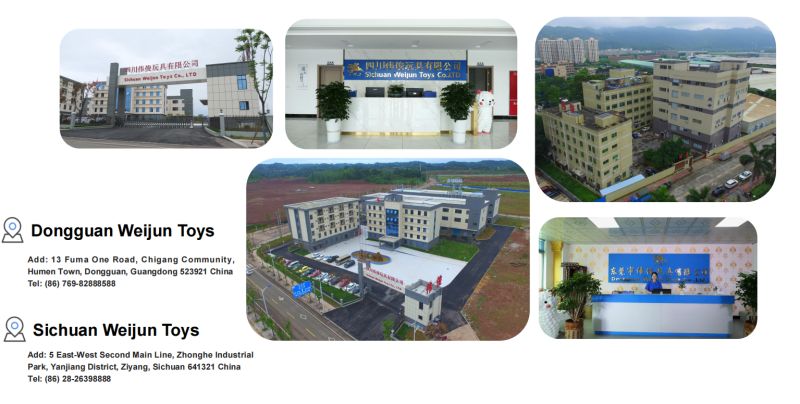Weijun Toy is specialized in manufacturing plastic toys(flocked)&gifts with competitive price and high quality. We have a large design team and release new designs every month. ODM&OEM are warmly welcomed. There are 2 owned factories located in Dongguan & Sichuan, Sichuan factory updated Sedex certificate in Jan.2024, which bring us more confidence to win more customers.

On January 18, 2024, the U.S. Consumer Product Safety Commission (CPSC) has approved ASTM F963-23 as a mandatory toy standard under 16 CFR 1250 "Toy Safety Regulations". Unless the CPSC receives significant objections before February 20, 2024, it will take effect on April 20, 2024.
The main updates of ASTM F963-23 are as follows:
1. Base material heavy metals
1) Provide a separate description of exemption situations to make it clearer;
2) Add accessibility determination rules to clarify that paint, coating or plating is not considered an inaccessible barrier. In addition, if any dimension of a toy or part covered by fabric is less than 5 cm, or the fabric material cannot be accessed through reasonable use and The fabric covering is also not considered an inaccessible barrier if subjected to abuse testing to prevent internal parts from being accessible.
2. Phthalates
Revise the phthalate requirements, requiring that the following eight phthalates in accessible plastic materials of toys shall not exceed 0.1% (1000 ppm): Di(2-ethyl)hexyl phthalate (DEHP) ; Dibutyl phthalate (DBP); Butyl benzyl phthalate (BBP); Diisononyl phthalate (DINP); Diisobutyl phthalate (DIBP); Phthalate Dipentyl formate (DPENP); Dihexyl phthalate (DHEXP); Dicyclohexyl phthalate (DCHP), consistent with 16 CFR 1307.
3. Sound
1) The definition of sound-making push-pull toys has been revised to provide a clearer distinction between push-pull toys and tabletop, floor or crib toys;
2) There are new abuse test requirements for sound-making toys over 8 years old. It is clear that toys for children under 14 years old must meet the sound requirements before and after use and abuse testing. For toys used by children between 8 and 14 years old, the same requirements apply. Use and abuse testing requirements for children 36 months to 96 months.
4. Battery
Higher requirements are placed on battery accessibility:
1) Toys over 8 years old also need to undergo abuse testing;
2) The screws on the battery cover must not fall off after the abuse test;
3) The accompanying special tool for opening the battery compartment should be described accordingly in the instructions: remind consumers to keep this tool for future use, point out that this tool should be stored in a place out of the reach of children, point out that this tool Not a toy.
5. Expansive materials
1) The scope of application has been revised, and expanded materials whose receiving status is not small parts have been added;
2) Corrected the error in the dimensional tolerance of the test gauge.
6. Projectile toys
1) Removed the requirements of the previous version regarding the storage environment of temporary projectile toys;
2) Adjusted the order of clauses to make them more logical.
7. Logo
New requirements for traceability labels have been added, requiring toy products and their packaging to be affixed with traceability labels containing certain basic information, including:
1) Manufacturer or private label name;
2) The production location and date of the product;
3) Details of the manufacturing process, such as batch or run numbers, or other identifying characteristics;
4) Any other information that would help determine the specific origin of the product.








